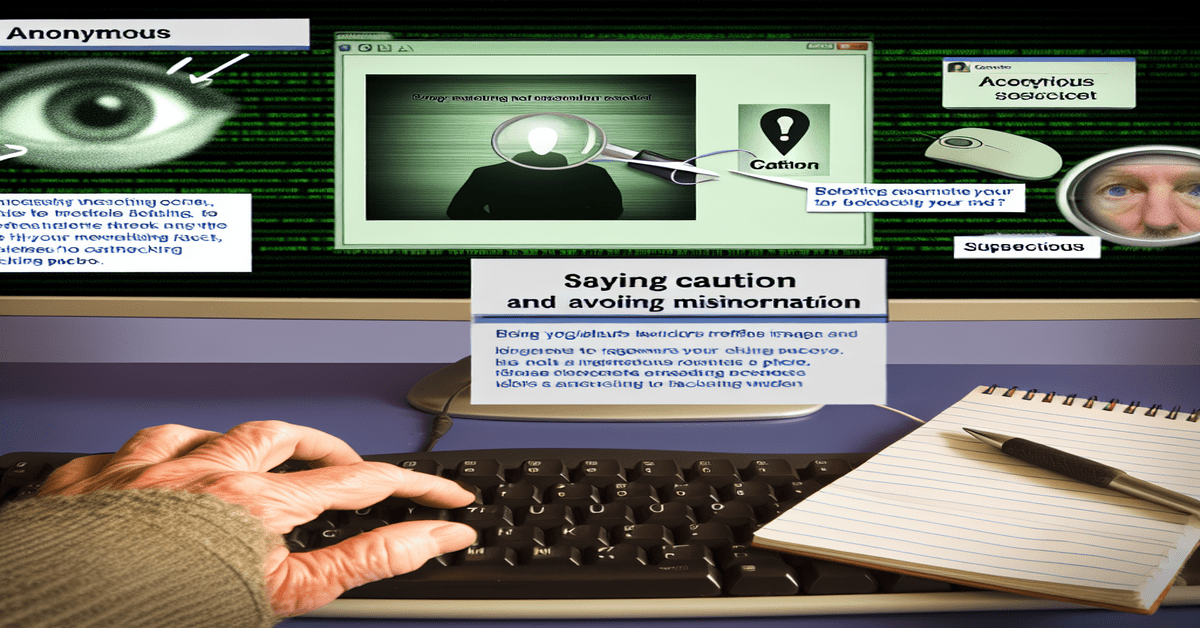Navigating the Minefield of Misinformation: A Guide to Staying Informed in the Digital Age
In an era where information spreads at an unprecedented pace, it’s crucial to be vigilant against the pervasive threat of misinformation and conspiracy theories. As we increasingly rely on social media platforms like Twitter and Facebook for news and updates, it’s essential to understand the dynamics behind the spread of false information and arm ourselves with the tools to identify and avoid falling prey to it.
The Anatomy of Misinformation
To effectively combat misinformation, we must first grasp why it exists and who stands to benefit from its propagation during significant news events. Misinformation often thrives on our emotional responses, urging us to react before thoroughly examining the facts. By taking a moment to **pause** and assess the information we encounter, we can reduce the risk of unwittingly contributing to the spread of false narratives.
Trust, But Verify
In an age where anyone can pose as an “authentic” source, it’s crucial to approach information with a healthy dose of skepticism. Before accepting any claim as truth, take the time to **verify** its origin and credibility. Curate a list of **trustworthy** information sources that have a proven track record of accuracy and reliability, and rely on them as your go-to resources for news and updates.
The Power of Context
Misinformation often thrives on incomplete or misleading information, presenting a distorted picture of reality. To avoid falling into this trap, it’s essential to seek out **comprehensive context** surrounding current events. By piecing together a holistic understanding of the situation, we can better discern between facts and fiction.
Detecting AI-Generated Content
As artificial intelligence advances, it’s becoming increasingly difficult to distinguish between genuine and AI-generated content. However, there are telltale signs that can help us spot the difference:
1. Scrutinize the depiction of **human hands** and inanimate objects for anomalies.
2. Inspect any text appearing on objects for **backward or nonsensical writing**.
3. Pay attention to the background for **blurry or distorted details**.
4. Assess the level of **glossiness or artistic style** of the image.
Remember, these techniques extend beyond images to **videos and real images** as well. Maintain a vigilant eye for any unusual or suspicious content.
Leveraging Fact-Checking Resources
In the fight against misinformation, fact-checking websites and tools are invaluable allies. Websites like Snopes, PolitiFact, and FactCheck.org dedicate themselves to verifying the accuracy of claims circulating online. By incorporating these resources into our information-vetting process, we can significantly reduce our susceptibility to false information.
As responsible digital citizens, it’s our collective duty to promote **public awareness** and **enhance media literacy**. By sharing this knowledge with our networks and encouraging critical thinking, we can create a more informed society that is resilient to the dangers of misinformation and conspiracy theories.
Don’t let misinformation deceive you. Arm yourself with the tools and knowledge to navigate the digital landscape with confidence. Together, we can build a future where truth prevails over falsehood.
#Misinformation #MediaLiteracy #FactChecking #Misinformation
- Original article and inspiration provided by Washington Post
- Connect with one of our AI Strategists today at Opahl Technologies


